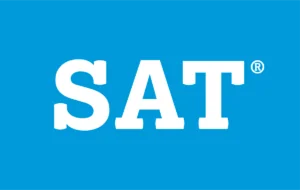TLDR
The video discusses a notorious SAT math problem from 1982, where all test-takers incorrectly answered a question about the revolutions of one circle around another. The test makers themselves had the wrong solution, assuming three revolutions, while the correct answer was not among the provided options. Three students recognized and reported this error, leading the College Board to acknowledge the mistake and nullify the question. The explanation involves the coin rotation paradox, where a circle rotates one more time than expected when rolling around another circle. This principle has broader applications, such as in astronomical timekeeping. The incident had minor implications for students’ scores and highlighted potential issues with standardized testing.

✅ AI Essay Writer ✅ AI Detector ✅ Plagchecker ✅ Paraphraser
✅ Summarizer ✅ Citation Generator
This article is a summary of a YouTube video “The SAT Question Everyone Got Wrong” by Veritasium
Key insights
- Incorrect SAT Question: In 1982, an SAT math question asked about the number of revolutions one circle makes around another. Despite all students choosing one of the provided options, none of these were correct.
- Coin Rotation Paradox: The video explains the coin rotation paradox, which reveals that a circle rolling around another completes one more rotation than intuitively expected. This principle was key to understanding why the SAT question’s assumed answer was incorrect.
- Correct Answer Not Provided: The actual correct answer to the SAT question was not among the options given. The test creators, like most students, incorrectly assumed the answer was three revolutions.
- Student Advocacy: Only three out of 300,000 test-takers recognized the error and wrote to the College Board, leading to the acknowledgment of the mistake.
- Impact on Test Scores: The College Board eventually nullified the question, slightly adjusting the test scores of all students. This decision had minor but significant implications for students’ college admissions and scholarship opportunities.
- Implications for Standardized Testing: This incident highlighted potential flaws in standardized testing and raised questions about the reliability and accuracy of such exams.
- Application in Astronomy: The principle illustrated by the SAT question has broader applications, such as in astronomical timekeeping, differentiating between solar and sidereal days.
- Changing Views on SATs: The video concludes by noting the decreasing relevance of SATs in college admissions, especially post-COVID-19, with many universities no longer requiring standardized tests.
Timestamped Summary
- 0:00-0:22: Introduction to a unique SAT problem from 1982, involving the revolutions of one circle around another.
- 0:22-0:58: Description of the SAT question, which asked about the number of revolutions circle A makes around circle B.
- 0:58-1:37: Explanation that the correct answer was not among the given options, with most, including the test makers, incorrectly assuming it was three.
- 1:37-2:16: Only three students out of 300,000 identified the mistake and reported it to the College Board.
- 2:16-3:15: Students’ argument based on the coin rotation paradox, demonstrating the actual answer should have been four, not three.
- 3:15-4:47: Visual demonstration with a scale model, showing circle A rotates four times around circle B.
- 4:47-6:00: Exploration of different perspectives: from circle B’s viewpoint, circle A appears to rotate only three times.
- 6:00-7:26: Discussion of the astronomical definition of a revolution, suggesting another possible answer could be one revolution.
- 7:26-7:46: The College Board’s admission of the error and decision to nullify the question.
- 7:46-10:33: Discussion of the broader implications of the question, including its relevance to astronomical timekeeping.
- 10:33-15:38: Reflection on the minimal but significant impact of the SAT question on students’ college opportunities and the overall reliability of standardized testing.
- 15:38-End: Concluding thoughts on the decreasing relevance of the SAT in college admissions and the broader implications for educational testing.
Q&A
Follow us on Reddit for more insights and updates.
Comments (2)
Welcome to A*Help comments!
We’re all about debate and discussion at A*Help.
We value the diverse opinions of users, so you may find points of view that you don’t agree with. And that’s cool. However, there are certain things we’re not OK with: attempts to manipulate our data in any way, for example, or the posting of discriminative, offensive, hateful, or disparaging material.





The coin has not travelled twice around the other coin. Call the coins T and B. (Top and bottom)
In the beginning the neck of the figure on T is above the head of the figure onB. They are both in the vertical position. After half of a rotation the head of T is directly below the neck of A.
Again they are both in the vertical position.
Another half rotation brings it back to the starting point.
The circumferences of any given circles are directly related to the diameters of the same given circles. The prime example of this are the gears in clocks and motor vehicles.
Not the first time either. There once was a geometry problem where you are presented with a pyramid and a tetrahedron. All sides are exactly the same length, call it one unit for brevity. If you place the tetrahedron so that one face is (effectively) shared with the pyramid. Is the uppermost line of the resulting figure parallel with the lower edge of the pyramid? Test said it was not until a couple of students proved it was.
Simple proof: Put two pyramids with line lengths of one unit so they share one line at the base. Draw a line between the two peaks. You now have a tetrahedron with all lines one unit. Base and peak are clearly parallel. The students had worst time trying to prove that test wrong.